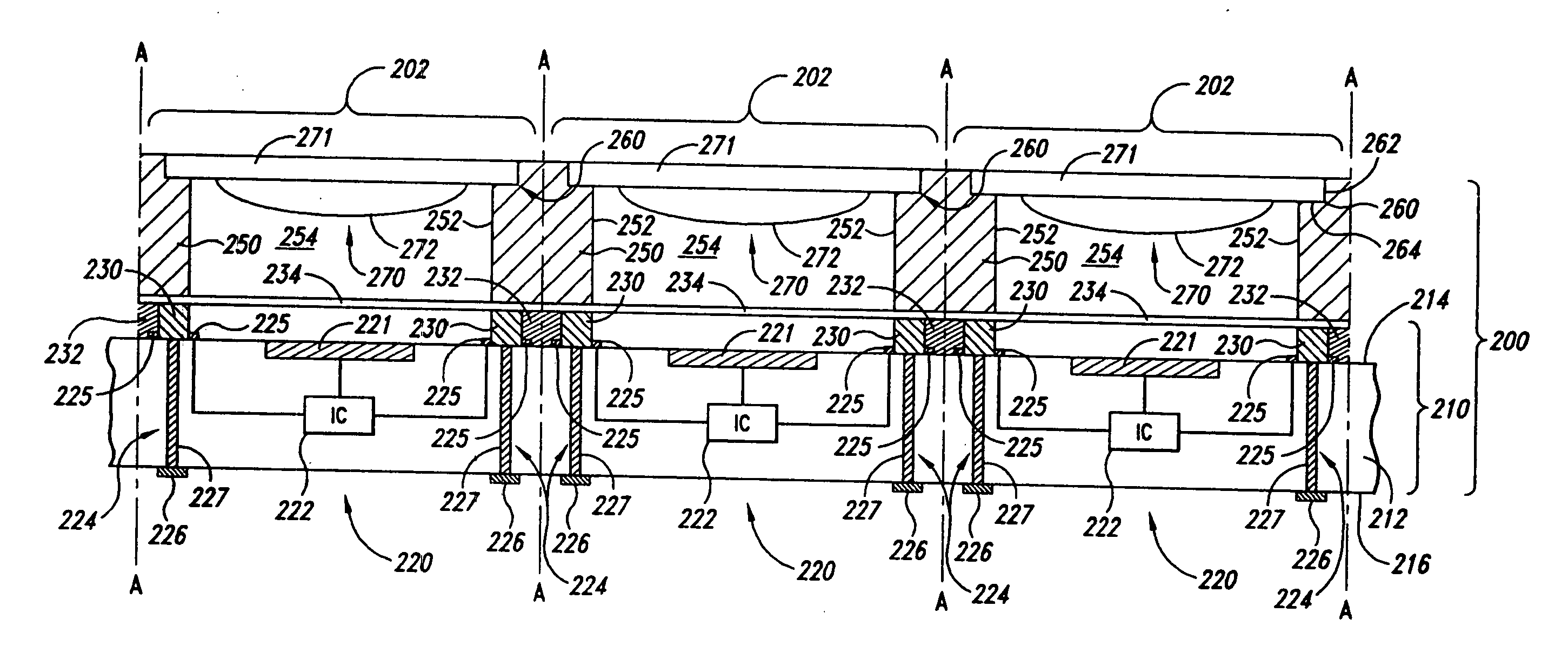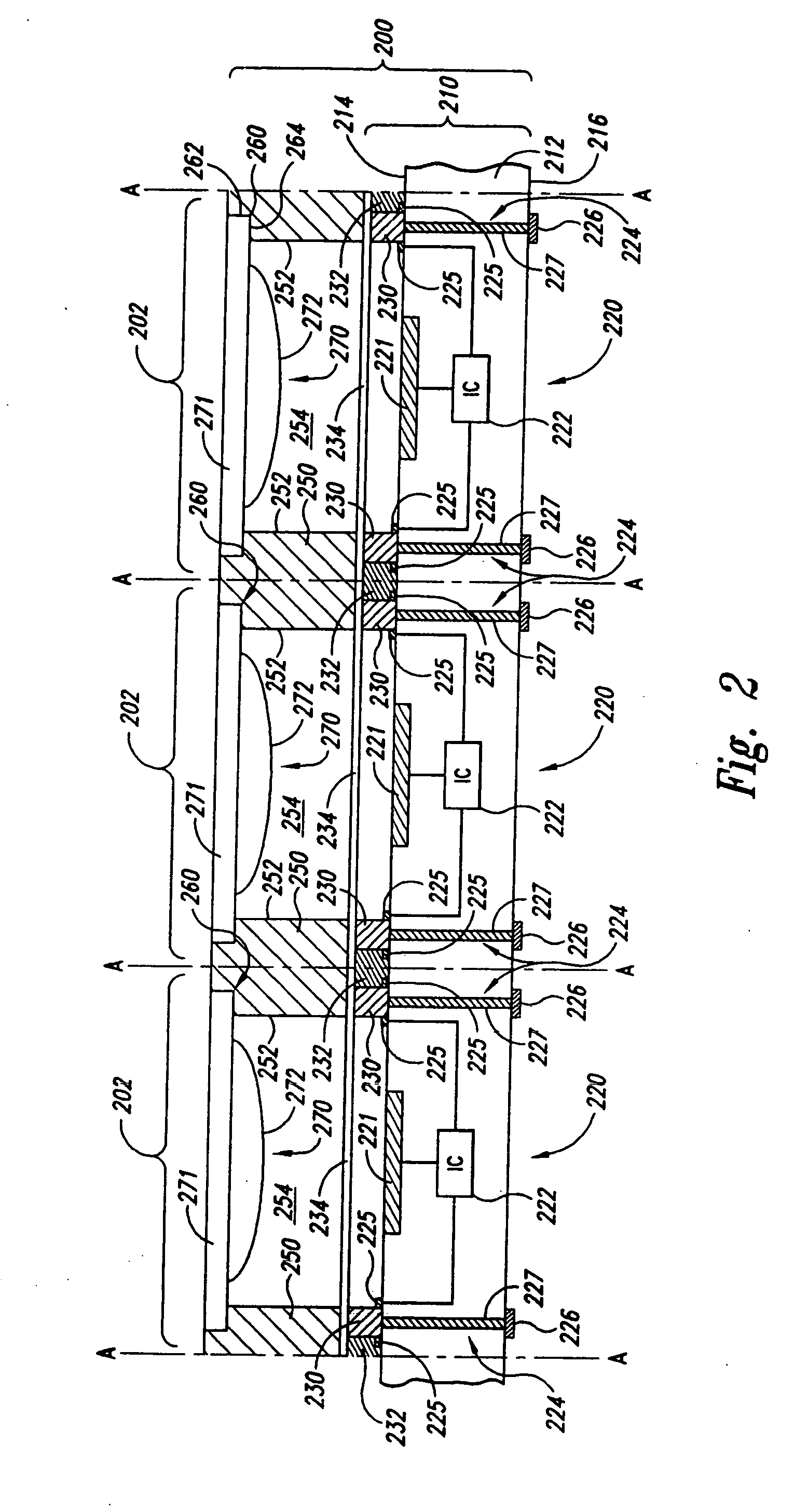Microelectronic imagers with optical devices and methods of manufacturing such microelectronic imagers
a microelectronic imager and optical device technology, applied in the field of microelectronic imagers and methods for packaging microelectronic imagers, can solve the problems of time-consuming and labor-intensive positioning of the lens at the desired focus distance from the image sensor, and the difficulty of accurately aligning the lens with the image sensor
- Summary
- Abstract
- Description
- Claims
- Application Information
AI Technical Summary
Problems solved by technology
Method used
Image
Examples
Embodiment Construction
A. Overview
[0018] The following disclosure describes several embodiments of methods for assembling optical devices with microelectronic imaging units and microelectronic imagers that are formed using such methods. One aspect of the invention is directed toward methods of manufacturing microelectronic imagers. An embodiment of one such method comprises providing an imager workpiece and constructing optics supports on the imager workpiece. The imager workpiece has a plurality of imaging dies that include image sensors and external contacts operatively coupled to the image sensors. The imaging dies can be on and / or in a first substrate such that the image sensors are at a front side of the first substrate. The optics supports are constructed on the imager workpiece before cutting the imager workpiece. The optics supports, for example, can be constructed on the first substrate or on a cover attached to the first substrate. The optics supports include openings aligned with corresponding ...
PUM
 Login to View More
Login to View More Abstract
Description
Claims
Application Information
 Login to View More
Login to View More - R&D
- Intellectual Property
- Life Sciences
- Materials
- Tech Scout
- Unparalleled Data Quality
- Higher Quality Content
- 60% Fewer Hallucinations
Browse by: Latest US Patents, China's latest patents, Technical Efficacy Thesaurus, Application Domain, Technology Topic, Popular Technical Reports.
© 2025 PatSnap. All rights reserved.Legal|Privacy policy|Modern Slavery Act Transparency Statement|Sitemap|About US| Contact US: help@patsnap.com



